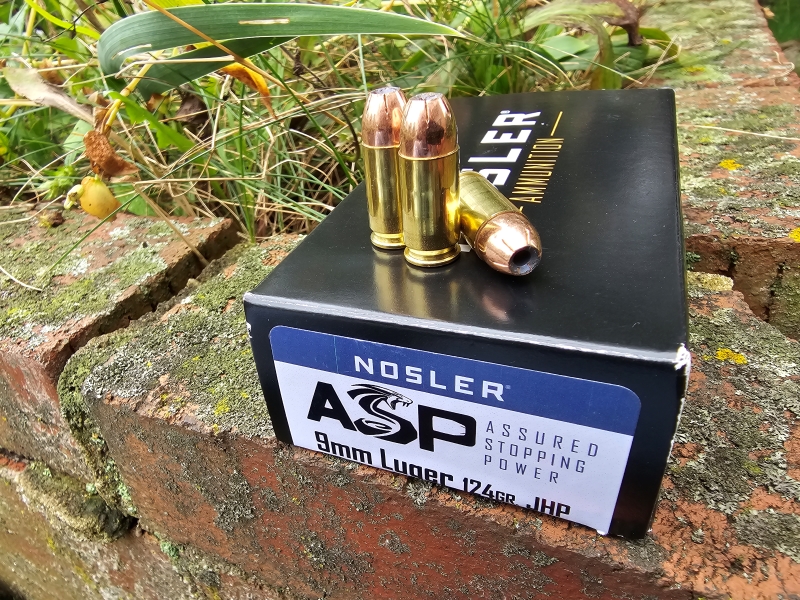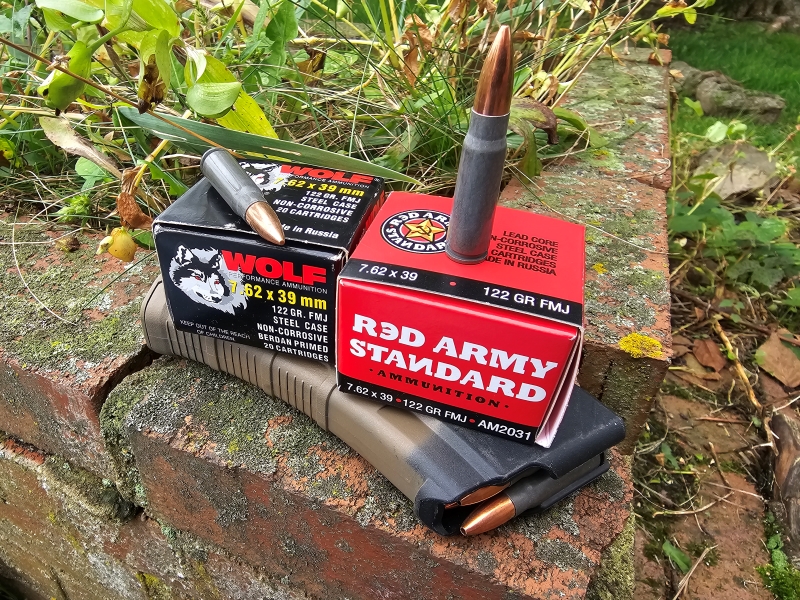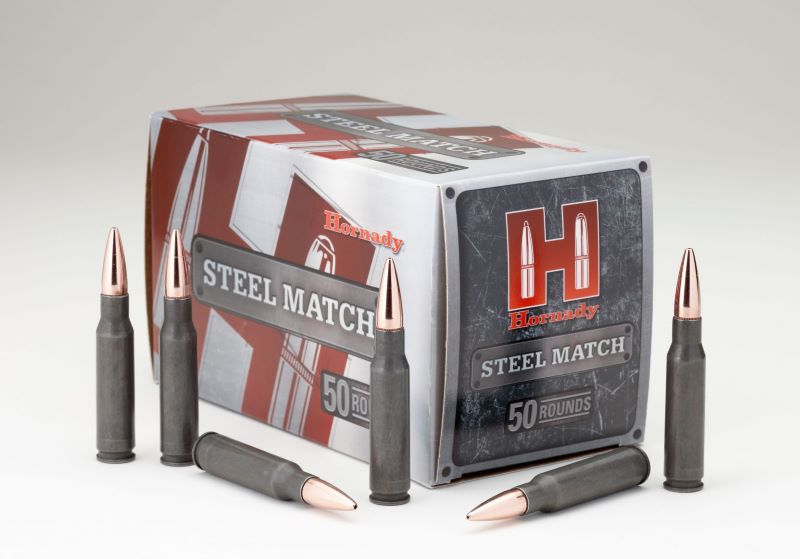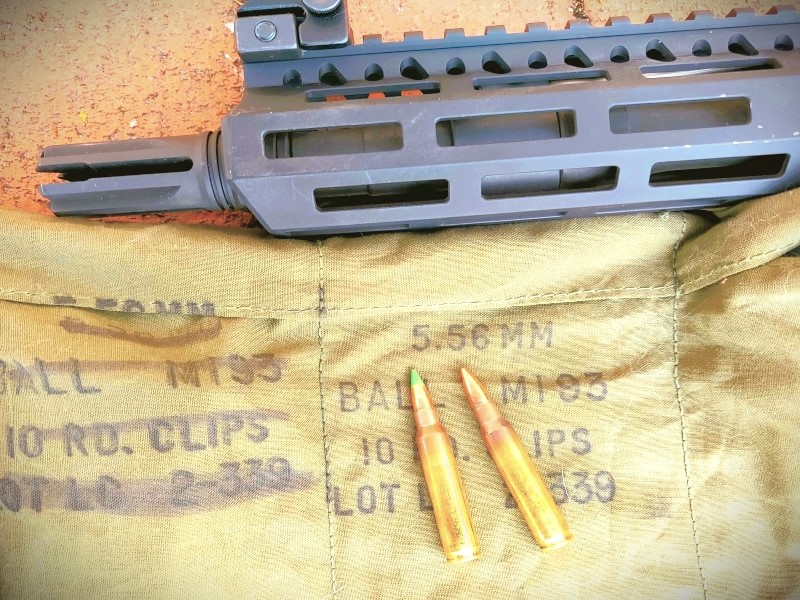Gun culture loves to debate. No, that doesn’t even come close – we obsess about debates! 9mm vs .45; AK vs AR; Double-Action vs Single-Action vs Striker-Fired; and the list goes on. Today, we’re going to make a stop at the steel vs brass casing debate. Why does it matter which metal we choose for our cartridge casings? Is it really a big deal? Are there any advantages between steel vs brass casing? You’d better steel yourself (pardon the pun) because the answers may shock you!
The Pros and Cons of Brass Cases
Brass is more malleable than steel. It’s usually 60% copper with the remainder zinc. So, who cares?
When fired, brass casings expand and snug up to the firearm’s chamber. Thus, less gas and unburned powder enter the firearm’s chamber and receiver. The brass cartridge then returns to approximately the same size it was before it was fired. This elasticity generally facilitates more positive and reliable extraction.

Reloaders gravitate to brass casings because most brass can be reloaded. Brass is easily reshaped and resized, which allows for reloading. Those who aren’t into reloading likely won’t care. However, reloading can save some coin in the long run for those who shoot high volumes.
Brass also corrodes less quickly than steel casings. Unfortunately, due to its high copper content, which is rarer than steel, brass-cased ammunition is more expensive than its steel counterpart.
The Pros and Cons of Steel Cases
Some people would rather be the guest of honor at a Jeffrey Dahmer dinner party than run steel-cased ammo through their firearms. Let’s take a look at why.
In World War II, many countries simply couldn’t get brass for their casings, so they developed steel cases. The practice stuck. In fact, the AK platform was actually designed around steel-cased ammunition.

Steel-cased ammo’s main claim to fame is that it’s typically cheaper brass. Steel sells for roughly one cent per pound, far cheaper than copper. On the flip side, it permits more gas and unburned powder to escape from the chamber. As a result, many believe steel fouls the firearm more quickly and causes stoppages.
Steel cases are not elastic like brass. When steel expands in the chamber, it doesn’t bounce back to its original size. As a result, steel cases are more likely to stick in the chamber of the firearm and cause extraction issues. If we happen to engage in a negative social interaction, a case stuck in the chamber is a major bummer. Also, steel cases can’t be reloaded.
Generally speaking, steel-cased ammo has less exact tolerances and consistency than brass ammunition. I imagine this is because it’s usually used with military-type firearms. It’s intended for a cheaper market, so cutting some corners keeps the cost down. This is pretty much expected with this level of ammunition. Those who use it are accepting of that fact.

Just because most steel-cased ammunition is produced to lower levels doesn’t mean it has no potential. Hornady, known for their high quality and superbly performing ammunition, actually loads Steel Match ammunition. It has all the quality of their other ammunition and proves a point — just because an ammo is steel-cased doesn’t mean it’s garbage.
The moral of that story is this: if you want to use high-quality steel-cased ammo, go with a reputable manufacturer (like Hornady). In that case, steel-cased ammo performs just as well as brass-cased ammo.
Extractor Wear?
I’ve heard people claim steel-cased ammo accelerates wear on extractors due to the steel being harder than brass — especially with AR-15s. I’ve also heard some say it will ruin pistol extractors. Personally, I’ve never run enough steel-cased ammo through any of my firearms to see if it degraded the extractors. Furthermore, I don’t know anyone who has done so either.
I cannot say with any authority if this well-accepted belief is actually true or not. However, I have spoken with dozens of people who claim it as gospel. When asked if they’ve ever worn out an extractor by using steel-cased ammo, they invariably said they have not. Yet, somehow, they know it to be an established fact. Take this information as you will.
Which firearms shrug off steel-cased ammo?
Generally speaking, I don’t cringe at all when running steel-cased ammo through the AK-47. In fact, the ubiquitous AK was designed to run steel-cased ammo. All the examples I’ve ever used chew through steel casings heartily and ask for more with a problem. Considering the AK was intended for closer-range engagements and isn’t a sniper-grade weapon, I’m not worried about squeezing every ounce of accuracy and performance from it.
At the volume of rounds we normally run through the AK, the savings to our pocketbook offered by steel-cased ammunition are well worth it when running that platform. The AK is certainly reliable enough that the extra little bit of fouling escaping from the chamber isn’t going to hurt anything.
On weapons such as the AK-74, which fires the 5.45x39mm cartridge, brass-cased ammo sometimes fails to extract very well because of its softer nature. At times, the extractor rips the head off the cartridge. On the other hand, steel-cased ammunition will extract far better because of its stiffer nature. This isn’t a rule by any means but a general statement.
Steel-cased ammo is also suitable for the FAL and other older surplus rifles that extract cartridges with a bit of vigor. The SKS and Galil fall into this category. The extra strength of steel-cased ammo often increases the reliability of the given weapon. Normally, it’s not that big of a deal, but just something to think about.
For the AK, I’ve used Tulammo, Red Army Standard, Wolf, and Brown Bear, and they’ve all worked perfectly.
A Steel Cased No-No
One weapon that I don’t care to run with steel-cased ammunition is the AR-15 platform. I’ve done so and had issues with feeding. In short, it didn’t like to extract. Granted, this was with Wolf ammunition. At the time, Wolf used a lacquer coating on their casings. When encountering a hot chamber, the coating melted and gummed things up, causing six kinds of hell.

From what I understand, Wolf no longer uses that coating for their .223/5.56mm rounds because of this very problem. The reason for the coating is steel casings don’t extract as reliably as brass because they don’t slide as easily. The coating supposedly adds lubricity to the casing. Typically, coatings these days are either lacquer or polymer.
The AR platform has softer extraction than the AK series. The AK rips cartridges out of the chamber with vigor. The AR…not so much. Any goop that builds up in the AR’s chamber is not going to create a feeling of sweetness and light. For this reason, I exclusively use brass-cased ammunition in the AR-15. To me, the savings just isn’t worth it.
Steel vs Brass Casing: Which is Better?
Well, it all depends. When I give that answer, it frequently results in villagers grabbing their torches and pitchforks and coming for me. With all joking aside, steel is a great bet if you’re using an AK platform. Other military-type rifles likely won’t mind that same diet, either. For the AR platform, brass is what usually works the very best.
The cost savings for some firearms for practice at the range or casual shooting make steel-cased ammo a good choice for some firearms. Personally, for me, I use brass-cased ammo for my handguns, AR, Lever Action, and .22s. For the AK, I’m perfectly fine using steel-cased ammo. Each shooter will have to take stock of whether steel-cased ammunition is worth the extra firearm maintenance. Of course, this doesn’t include firearms designed around steel-cased ammo specifically.
How about it – which do you prefer?


